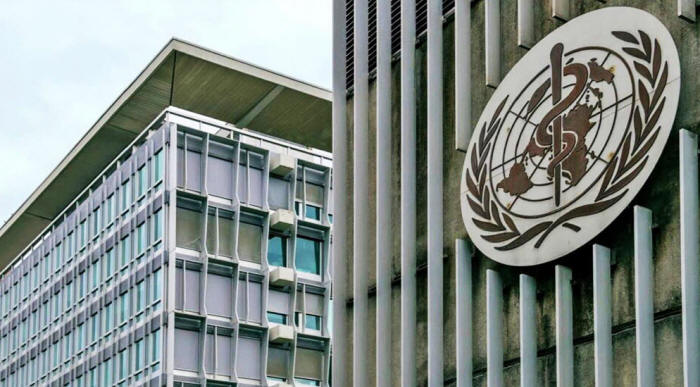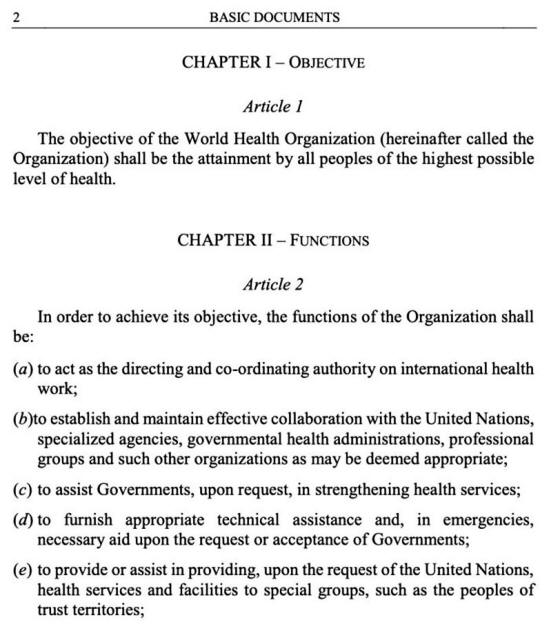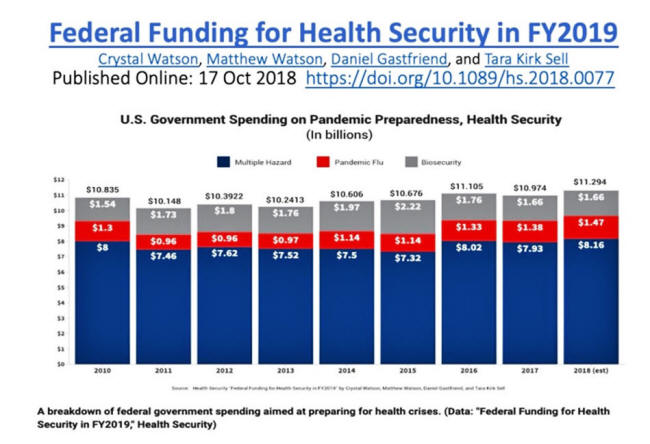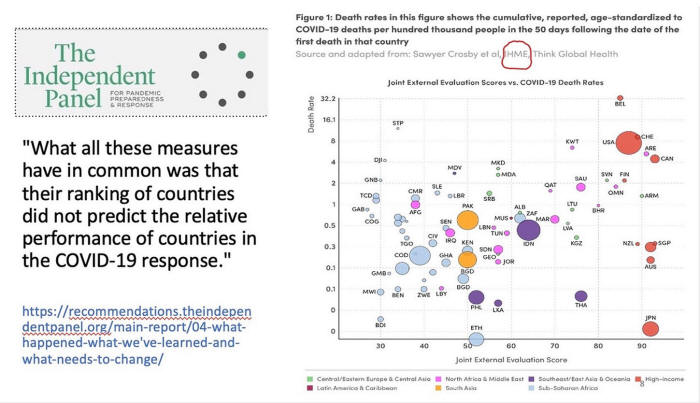|

by Meryl Nass
November 14,
2023
from
BrownStone Website
|
Dr.
Meryl Nass, MD is an internal medicine specialist in
Ellsworth, ME, and has over 42 years of experience in
the medical field. She graduated from University of
Mississippi School of Medicine in 1980. |

Over the past two years you've probably heard about the attempted
WHO power grab...
Here's everything you
need to know to understand the status today.
Overview
-
The
build-out of a massive and expensive global biosecurity
system is underway, allegedly to improve our preparedness
for future pandemics or biological terrorism.
In aid of
this agenda two documents are being prepared through the
WHO:
a broad
series of amendments to the existing International
Health Regulations (2005) (IHR) and a proposed, entirely
new pandemic treaty.
-
A Pandemic
Fund a.k.a. financial intermediary fund to aid
preparedness worldwide has been established by the World
Bank and WHO.
-
Multiple
names have been used for the new treaty as new drafts are
produced, such as:
Pandemic Treaty, WHO
CA+, Bureau Text, Pandemic Accord, and Pandemic
Agreement.
-
Negotiations for these documents are being held in secret.
The latest available draft of the IHR
amendments is from February 6th, 2023.
-
The latest Pandemic
Treaty draft is from October 30th, 2023.
-
Both the
amendments and treaty are on a deadline to be considered for
adoption at the 77th annual World Health Assembly
meeting in May 2024.
-
WHO's
principal attorney Steven Solomon has announced that
he crafted a legal fig leaf to avoid making the draft
amendments public by January 2024, as required by the WHO
Constitution.
How Would these Drafts Become
International Law?
-
A treaty
requires a two-thirds vote of the World Health Assembly's
194 member states to be adopted and is binding only for
States that have ratified or accepted it (Article 19 and 20,
WHO Constitution).
However, it
could be enacted into force in the US by a simple signature,
without Senate ratification. [See CRS report, "US
proposals to Amend the International Health Regulations."]
-
The IHRs
and any amendments thereto are adopted by simple majority,
and become binding to all WHO Member
States, unless a state has rejected or made reservations to
them within predefined timeframes (Articles 21 and 22, WHO
Constitution; Rule 72, Rules of procedures of the World
Health Assembly).
-
Last year,
however, amendments to 5 articles of the IHRs were
considered in opaque committee meetings during the 75th
annual meeting, and then adopted by consensus without a
formal vote.
This
process makes it harder to blame individual diplomats for
their votes.
-
The current
draft of the IHR Amendments would allow the
Director-General of WHO
or Regional Directors to declare a Public Health Emergency
of International Concern (PHEIC), or the potential for one,
without meeting any specific criteria (Article 12).
The WHO
would then assume management of the PHEIC and issue binding
directives to concerned States.
-
PHEICS and potential PHEICs could be declared
without the agreement of the concerned State or
States.
-
WHO's unelected officials (Director-General,
Regional Directors, technical staff) could dictate
measures including quarantines, testing and
vaccination requirements, lockdowns, border
closures, etc.
-
WHO
officials would not be accountable for their decisions and
have diplomatic immunity...

What are Some Specific Problems
with the WHO's Proposed Amendments?
-
Article 3
of the proposed IHR amendments removes protections
for human rights:
-
Struck from the IHR is the crucial guarantee of
human rights as a foundation of public health: "The
implementation of these Regulations shall be with
full respect for the dignity, human rights and
fundamental freedoms of persons…"
-
This has been replaced with the following legally
meaningless phrase: "based
on the principles of equity, inclusivity,
coherence…"
-
Proposed
article 43.4 of the IHR notes that the WHO could ban the use
of certain medications or other measures during a pandemic,
since its 'recommendations' would be binding:
-
"WHO shall make
recommendations to the State Party concerned to
modify or rescind the application of the additional
health measures in case of finding such measures as
disproportionate or excessive.
-
The Director General
shall convene an Emergency Committee for the
purposes of this paragraph."
-
States'
obligations in the proposed IHR Amendments would include:
-
Conducting extensive biological surveillance of
microorganisms and people (Article 5)
-
Monitoring mainstream and social media and to censor
"false and unreliable information" regarding
WHO-designated public health threats (Article
44.1(h) - new)
-
Taking medical supplies from one State for use by
other States as determined by the WHO (New Article
13A)
-
Giving up intellectual property for use by other
States or third parties (New Article 13A)
-
Transferring genetic sequence data for "pathogens
capable of causing pandemics and epidemics or other
high-risk situations" to other Nations or third
parties, despite the risks this entails (Article
44.1(f) - new)
What are Problems with the
Proposed Pandemic Treaty?
All the
Pandemic Treaty drafts (as well
as the proposed Amendments to the IHR) produced so far are based on
a set of false assumptions.
These include the
following:
"the
directing and coordinating authority on international
health."
But it is
not and never has been...
The WHO has
always been an advisory body, responding to requests for
help from member states. It has never previously been a
directing or governing body with authority to govern member
states.
Here is the
relevant part of its Constitution, on page 2:

-
The WHO claims that
"international spread of disease demands the widest
international cooperation," which,
-
ignores the fact that international spread may be
quite limited and able to be managed by local or
national authorities
-
ignores that the most appropriate responses will be
determined by the specific circumstances, and not by
a WHO algorithm
-
ignores that the WHO has limited infectious disease
expertise relative to large nation states.
-
The claim
made by WHO is that nations will be able to retain national
sovereignty through their ability to pass and enforce health
laws, while they will simultaneously be bound and
accountable to obey the directives from the WHO on health.
This is
contradictory and designed to confuse: if the WHO can impose
its public health decisions on member states, it and not the
states will have sovereignty over health.
-
The
tremendous cost and suffering from COVID are being blamed on
lack of preparedness.
However,
the US was spending about $10 billion yearly on pandemic
preparedness before the pandemic.
Yet we had
few masks, gloves, gowns, drugs, etc. when the pandemic
struck.
Why would
we expect a central WHO authority, which relies on vested
interests for 85 percent of its funding, to do any better?

-
The claim
is that lack of equity led to failure to share drugs,
vaccines, and personal protective equipment (PPE) -
ignoring the fact that no nation had sufficient PPE or tests
early in the pandemic, and that it was nations withholding
generic drugs from their populations that caused important
treatment shortages.
Furthermore, now that we know the COVID vaccines result in
negative efficacy several months post-vaccination (making
recipients more susceptible to developing COVID), it is
apparent that nations that were last in line for COVID
vaccines and whose populations are mostly unvaccinated have
fared better overall than those who received vaccines for
their populations.
The
so-called lack of equity was fortuitous for them!
-
The claim
is that pandemics invariably arise at the animal-human
interface and that they are natural in origin.
Neither is
true for COVID or monkeypox, the last two declared public
health emergencies of international concern, which came from
laboratories.
-
The claim
is that the vaguely defined "One Health approach" can
prevent or detect pandemics and ameliorate them.
Yet it
remains unclear what this strategy is, and there is no
evidence to support the claim that One Health offers any
public health advantages whatsoever.
-
The claim
is that increasing the capture and study of "potential
pandemic pathogens" will be accomplished safely and yield
useful pandemic products, when neither is true.
The CDC's Select
Agent Program receives 200 reports yearly of accidents,
losses or thefts of potential pandemic pathogens from high
containment labs within the United States:
4
reports (and 4 potential pandemics) per week...!
And this is
only within the US.
-
Drafts of
the treaty and amendments assume that pharmaceutical
manufacturers will agree to give up certain intellectual
property rights.
In fact,
neither developing nations nor pharmaceutical manufacturers
are happy with the recent treaty proposal on
intellectual property.
-
The claim
is that the UN adopted a Declaration on pandemic
preparedness supporting the WHO plan on September 20, 2023.
In fact, 11
countries rejected the Declaration procedure and it was only
signed by the UN General Assembly president, representing
himself and not the UN General Assembly.
-
The claim
is that the WHO has the legal right to require nations to
censor "infodemics" and only allow the WHO's public health
narratives to be shared, yet this violates our First
Amendment's freedom of speech.
-
The claim
is that health "coverage" (insurance) will automatically
provide the world's citizens access to a broad range of
health care, while the primary reason for lack of access to
healthcare is the lack of practitioners and facilities, not
lack of "coverage."
Some Specific Examples of What is
Wrong with the Treaty
Article 3, #2. Sovereignty
"States
have, in accordance with the charter of the United Nations
and the general principles of international law, the
sovereign right to legislate and to implement legislation in
pursuance of their health policies."
This language fails to address the
issue of the WHO assuming sovereignty for health matters over
states through this treaty. It is a disingenuous attempt to grab
sovereignty while claiming otherwise.
Article 3, #3. Equity
"Equity
includes the unhindered, fair, equitable
and timely access to safe, effective,
quality and affordable pandemic - related
products and services, information,
pandemic - related technologies and social
protection."
However, Article 9, #2 (d) states
that parties shall promote "infodemic management," and infodemic
is defined in Article 1(c) as false or misleading information.
Article 18, #1 instructs the
Parties to,
"combat false, misleading,
misinformation or disinformation…"
In earlier drafts the WHO spelled
out that only the WHO's public health narrative would be allowed
to spread.
Article 4, #3. Pandemic Prevention and Public Health Surveillance
"The
Parties shall cooperate with the support of the WHO
Secretariat to strengthen and maintain public health
laboratory and diagnostic capacities, especially with
respect to the capacity to perform genetic sequencing, data
science to assess the risk of detected pathogens and to
safely handle samples containing pathogens and the use of
related digital tools."
While this section omits
incentivizing Gain-of-Function laboratory research (which was
included in the earlier Bureau draft) it does direct nations to
perform genetic sequencing of potential pandemic pathogens
(i.e., biological warfare agents) they find and to safely handle
them, which requires high containment (BSL3/4) laboratories.
Also in Article 4 is the need to,
"develop,
strengthen and maintain the capacity to (i) detect, identify
and characterize pathogens presenting significant risks…",
...indicating
the directive for nations to perform
surveillance to seek out such pathogens and study them.
Article 6, #4. Preparedness, Readiness, and Resilience
"The
Parties shall establish, building on existing arrangements
as appropriate, genomics, risk assessment, and laboratory
networks in order to conduct surveillance and sharing
of emerging pathogens with pandemic potential, with
such sharing pursuant to the terms and
modalities established in Article 12."
"Article 1 (h) defined
'pathogen with pandemic potential' as any pathogen that has
been identified to infect humans and that is potentially
highly transmissible and capable of wide, uncontrollable
spread in human populations and highly virulent, making it
likely to cause significant morbidity and/or mortality in
humans."
Why does the WHO require nations
to go out and find potential pandemic pathogens (a.k.a.
biological warfare agents) and supply both biologic samples and
pathogens' genetic sequences to the WHO, where they will be
shared with pharmaceutical companies, research centers and
academic institutions, as well as possible others?
They are also to share the genetic
sequences online, where hackers could obtain the sequences and
produce biological warfare agents.
Yet this behavior is prohibited
by Security
Council Resolution 1540.
Article 8, #3. Preparedness Monitoring and Functional Reviews
"The
parties shall, building on existing tools, develop and
implement an inclusive, transparent, effective and efficient
pandemic prevention, preparedness and response monitoring
and evaluation system."
Yet 4 different monitoring systems
("tools" - see graphic below) have been used to gauge nations'
readiness for pandemics and all 4 failed to predict how well
they would do when COVID appeared.
There is no acknowledgement of the failures of our assessment
tools, nor discussion of whether there exist
any useful assessment tools.
And this begs the question why, if
our means of assessing progress against pandemics failed, do we
think that similar efforts are likely to be successful in
future?

Article 10, #1 (d). Sustainable Production
"The
Parties encourage entities, including manufacturers within
their respective jurisdictions, in particular those that
receive significant public financing, to grant, subject to
any existing licensing restrictions, on mutually agreed
terms, non-exclusive royalty-free licenses to any
manufacturers, particularly from developing countries, to
use their intellectual property and other protected
substances, products, technology, know-how, information and
knowledge used in the process of pandemic - related product
development and production, in particular for pre-pandemic
and pandemic diagnostics, vaccines and therapeutics for use
in agreed developing countries."
This and related sections are
probably what make the pharma organization so upset with the
current Treaty draft.
Article 12, #4 (a) i (2) Access and Benefit-Sharing
"Upload the
genetic sequence of such WHO PABS (Pathogen Access and
Benefits System) material to one or more publicly accessible
databases of its choice, provided that the database has put
in place an appropriate arrangement with respect to WHO PABS
material."
The treaty requires the sharing of
pathogens and the need to identify and upload their genetic
sequences online, where they will be accessible.
This could also be called
proliferation of biological weapons agents, which is generally
considered a crime.
In the US, "Select Agents" are
those designated to have pandemic potential, and
the select agent program is managed by CDC and USDA.
For safety, CDC must give
permission to transfer select agents.
Yet the select agent rules are
ignored in this WHO Treaty, which demands transfer of agents
that could cause a worldwide pandemic.
And in an apparent effort to
handwave over existing rules, the draft states in Article 12, #8.
"The
Parties shall ensure that such a system is consistent with,
supportive of, and does not run counter to, the objectives
of the Convention on Biological Diversity and the Nagoya
Protocol thereto.
The WHO
PABS system will provide certainty and legal clarity to the
providers and users of WHO PABS materials."
Article 13, #3 (e). Global Supply Chain and Logistics (SCL)
"The terms
of the WHO SCL Network shall include: facilitating the
negotiation and agreement of advance purchase commitments
and procurement contracts for pandemic-related products."
Advance purchase commitments are
contracts that obligate nations to buy products for pandemics in
advance, sight unseen.
Neither the manufacturer nor the
state party knows what is coming, but once WHO issues a pandemic
declaration, the contracts are activated and the US government
will have to buy what the manufacturer produces.
The 2009 swine flu pandemic
provides a useful example. Advance purchase commitments led to
tens of billions in vaccine purchases in North America and
Europe for a flu that was less severe than normal.
The GSK Pandemrix brand of vaccine
led to over 1,300 cases of severe
narcolepsy, primarily in adolescents.
Rapid production of vaccines for
which profits are guaranteed and liability is waived has never
once been a win for the consumer.
Article 14. Regulatory Strengthening
Nations are to harmonize their
regulatory requirements, expedite approvals and authorizations
and ensure that legal frameworks are in place to support
emergency approvals.
This incentivizes a race to the
bottom for drug and vaccine approval standards, particularly
during emergencies.
|






